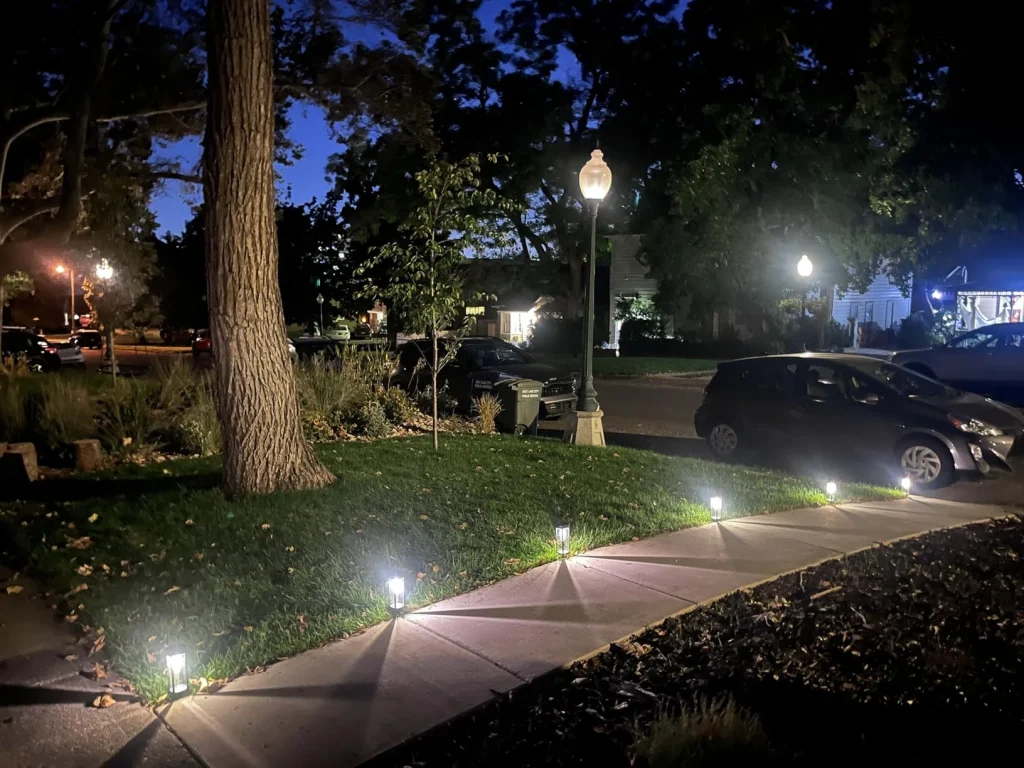In the operation of solar lamps, the battery serves as the “heart,” playing a critical role in storing and releasing energy, significantly impacting performance. Below, we delve into the various aspects of solar lamp batteries.

Diverse Battery Types, Each with Pros and Cons
Lead-Acid Batteries: Cost-Effective but Limited
Lead-acid batteries are among the more common types used in solar lamps. They are affordable, as seen in the case of Lucy, a small-town resident who initially chose solar pathway lights with lead-acid batteries for her garden. These batteries meet basic lighting needs initially, but their drawbacks are evident. Lead-acid batteries are bulky, heavy, and have a relatively short cycle life. After 1–2 years of frequent charging and discharging, Lucy noticed a significant reduction in lighting duration, requiring frequent battery replacements, which became a hassle.
Nickel-Metal Hydride (NiMH) Batteries: An Eco-Friendly Upgrade
NiMH batteries are favored for their environmental benefits. Compared to lead-acid batteries, they offer higher energy density and weaker memory effect. David, an outdoor enthusiast, uses solar emergency lights with NiMH batteries for camping. These batteries withstand moderate temperature fluctuations and perform reliably in outdoor conditions. However, their higher cost limits widespread adoption.
Lithium Batteries: High Performance as the Mainstream Choice
Lithium batteries have become the dominant choice for solar lamps. For example, Bitpott solar pathway lights use 3.7V 1.85Wh lithium-ion batteries, which boast numerous advantages. Lithium batteries have high energy density, are compact, and can store substantial energy. Emma, who lives in a city apartment with a balcony, installed Bitpott solar landscape lights. The lithium battery enables efficient operation even in limited spaces. Moreover, lithium batteries have a long cycle life, typically supporting 500–1000 charge-discharge cycles, reducing the need for frequent replacements. They also charge quickly, storing sufficient energy in a short time to meet nighttime lighting needs.

Battery Capacity: Determining Lighting Duration
Battery capacity directly affects a solar lamp’s lighting duration. For pathway lights, capacity is crucial. Tom, for instance, installed solar lamps with varying battery capacities in his garden. Lights with smaller-capacity batteries only illuminated for a few hours in the evening before running out of power, leaving parts of the garden path dark. In contrast, Bitpott solar garden lights with larger-capacity batteries, when fully charged, provided all-night illumination. This is because larger-capacity batteries store more energy converted from solar panels, ensuring stable, long-term performance.
Battery Lifespan: Impacting Long-Term Costs
Battery lifespan is a key factor in determining the long-term value of solar lamps. Low-quality batteries may degrade significantly within six months to a year, resulting in shorter lighting durations. High-quality batteries, such as the premium lithium batteries used in Bitpott spotlights, maintain stable performance over extended periods. Jack, who lives in a coastal villa, installed Bitpott spotlights that withstood harsh sea breezes and humidity. Years later, the batteries continued to function reliably, maintaining excellent lighting performance. This not only saved Jack the cost of frequent lamp and battery replacements but also kept his garden safe and visually appealing.

Temperature’s Significant Impact on Batteries
Battery performance is notably affected by temperature changes. In cold environments, such as winter, chemical reactions in batteries slow down, reducing capacity and shortening lighting duration. Lily, living in the north, noticed her solar lamps were less bright and illuminated for shorter periods in winter compared to summer. In high temperatures, batteries experience faster self-discharge, which also affects their lifespan. Bitpott addresses this by optimizing battery materials and circuit designs, ensuring their lamps maintain stable performance across varying temperatures and minimizing adverse temperature effects.
Conclusion
In summary, the type, capacity, lifespan, and temperature adaptability of solar lamp batteries profoundly impact overall performance. When choosing solar lamps, consumers, like those in the examples above, should carefully consider these critical factors and opt for high-performance products, such as Bitpott’s solar lamps, to achieve the best user experience and long-term lighting reliability.


Leave a Reply